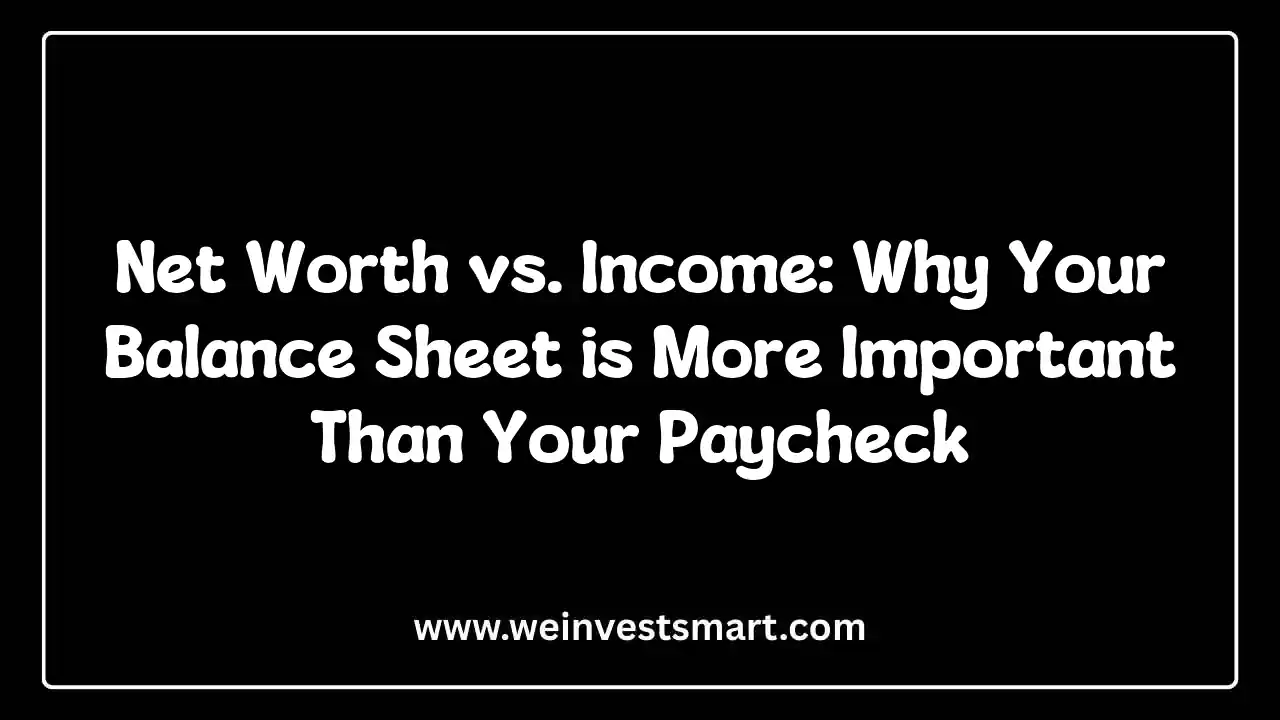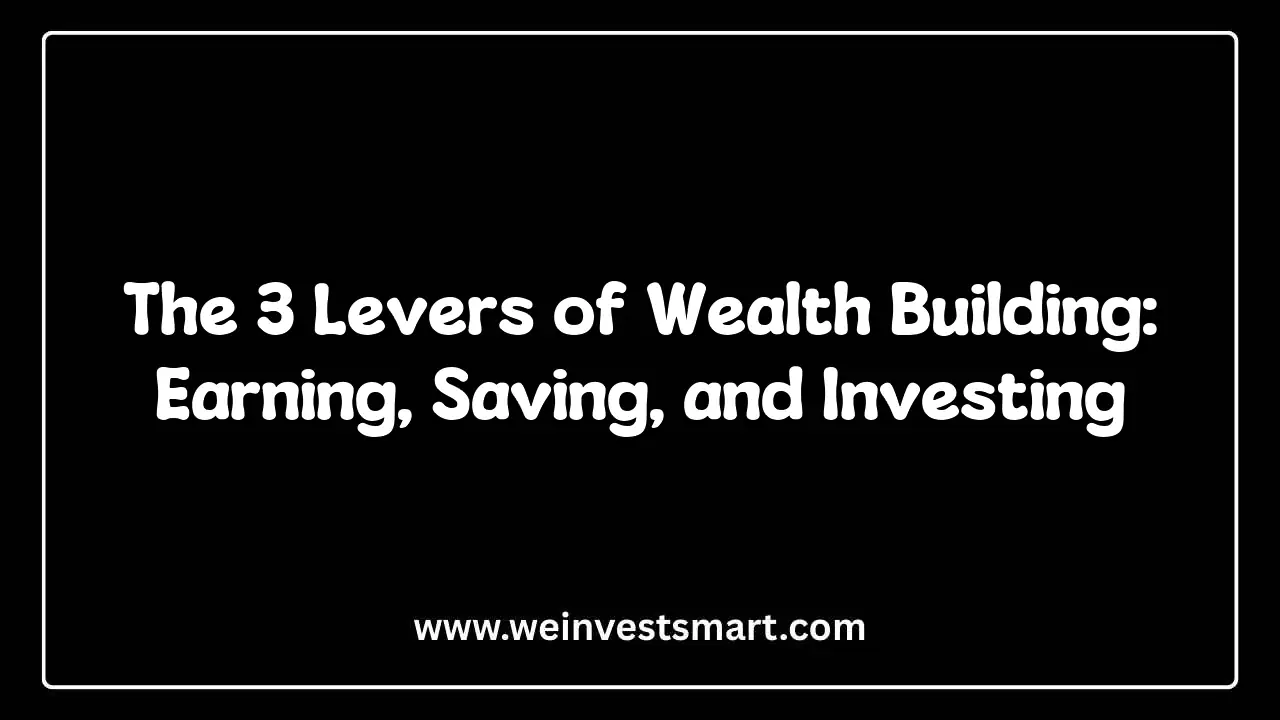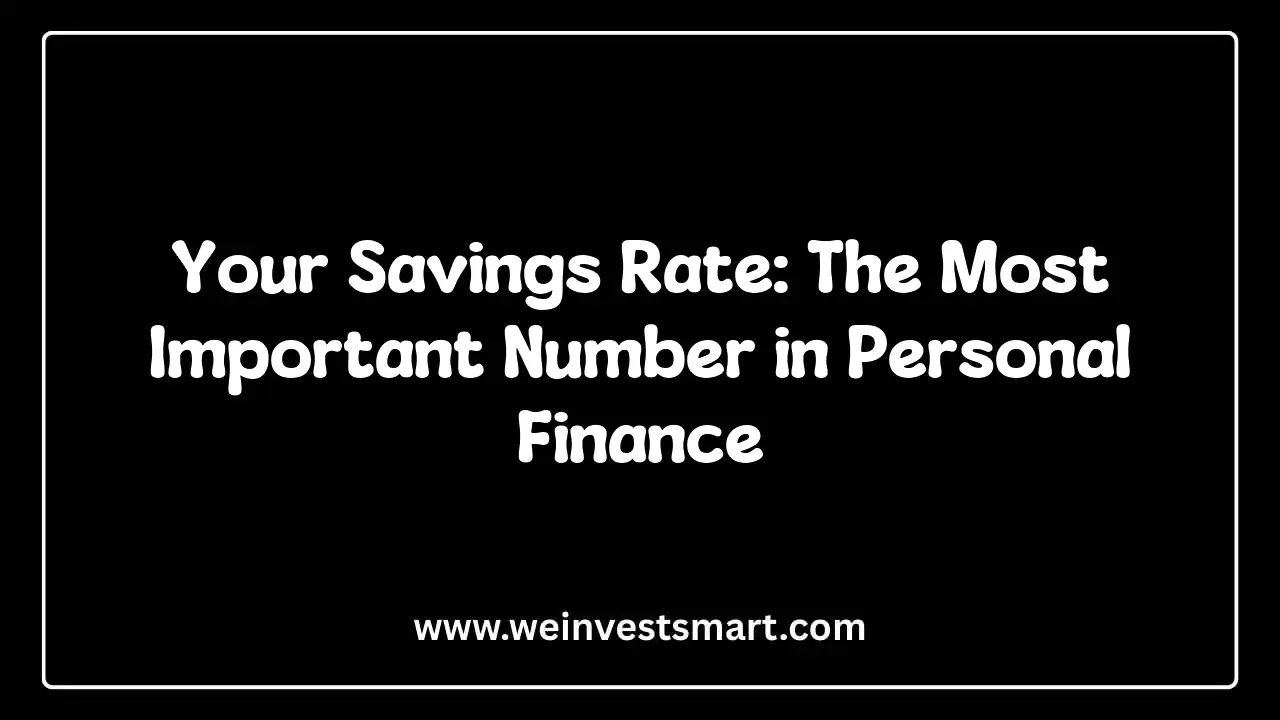· WeInvestSmart Team · wealth-building · 10 min read
The Ladder of Personal Finance: A Visual Guide to Building Wealth
Create a compelling infographic or visual post that shows the steps to wealth, from getting out of debt at the bottom to estate planning and philanthropy at the top. This provides a clear, motivating path.
Most people approach their finances like a panicked chef in a chaotic kitchen. They hear a bit of advice from one expert to “pay off all your debt,” another yells to “max out your 401(k),” and a third insists that “you must start investing in crypto now!” The result is a mess of conflicting priorities and frantic, disjointed actions. They dabble in a little of everything but master nothing, feeling perpetually overwhelmed and making little real progress. But here’s the uncomfortable truth: building wealth isn’t a chaotic scramble. It’s an orderly, sequential process.
Going straight to the point, your financial journey has an optimal order of operations, just like a mathematical equation. The problem isn’t that people lack the desire to build wealth; it’s that they lack a clear, step-by-step blueprint. They’re trying to build the roof of their financial house before they’ve even laid the foundation.
But what if we told you there was a simple, visual guide that could eliminate this confusion forever? What if you could see your entire financial journey laid out as a series of clear, achievable steps, like rungs on a ladder? Here’s where things get interesting. This isn’t a secret formula; it’s a logical framework that successful wealth builders have intuitively followed for generations. We call it The Ladder of Personal Finance. And this is just a very long way of saying that it’s time to stop guessing and start climbing.
Why You Need a Financial Ladder
Before we start climbing, we must understand why this sequential approach is so critical. Your financial resources—your time, your money, your attention—are finite. Trying to do everything at once guarantees that you will do nothing well. You might put $100 toward your student loans, $100 into a brokerage account, and $100 into your savings, feeling productive. But this shotgun approach is incredibly inefficient.
The funny thing is that some financial actions have a mathematically and psychologically higher return than others, especially at different stages of your life. Paying off a credit card with a 22% interest rate is a guaranteed, risk-free 22% return on your money. No investment in the world can reliably offer that. Building a small emergency fund provides a massive return in the form of peace of mind and the avoidance of catastrophic “bad debt” when a crisis hits. You get the gist: doing the right thing at the right time is the key to accelerating your progress. The Ladder of Personal Finance provides that order.
You may also be interested in: The Millionaire Next Door: 7 Surprising Habits of Everyday Millionaires
Rung 1: The Foundation — Budgeting and a Starter Emergency Fund
This is ground zero. Before you can even think about climbing, you must be on solid ground. This rung is all about establishing control and creating a small buffer against chaos.
- Create a Simple Budget: Forget complex spreadsheets. The goal here is simple: ensure you are spending less than you earn. For one month, track your income and all your expenses. This isn’t about judging yourself; it’s about gathering data. You need to know where your money is going before you can tell it where to go. This is the non-negotiable first step.
- Build a $1,000 Starter Emergency Fund: The goal here is speed, not size. This small pile of cash is your shock absorber. It’s the money that keeps a flat tire from becoming a high-interest credit card balance. It’s the buffer that prevents a small, unexpected bill from derailing your entire financial plan. Put this money in a separate, easily accessible savings account and do not touch it unless it’s a true emergency.
You may also be interested in: How to Build Multiple Income Streams: A Guide for Beginners
Rung 2: The Escape — Employer Match and High-Interest Debt
Now that you have a tiny safety net, your primary mission is to eliminate the financial anchors dragging you down and to capture the “free money” available to you.
- Contribute Enough to Get Your Employer’s 401(k) Match: If your employer offers a 401(k) or similar retirement plan with a matching contribution, this is the best-guaranteed return on investment you will ever find. If they match 100% of your contributions up to 5% of your salary, that is a 100% return on your money. You must capture this. Contribute just enough to get the full match. Do not contribute a penny more at this stage.
- Aggressively Pay Off High-Interest Debt: This is your all-out war. We’re talking about credit card debt, payday loans, personal loans—anything with an interest rate above 7-8%. This debt is a financial emergency. Every dollar you put toward a 20% interest rate debt is a 20% guaranteed, tax-free return. Throw every spare dollar you have at this. Use the “avalanche” (highest interest rate first) or “snowball” (smallest balance first) method. Just pick one and be relentless.
You may also be interested in: The 3 Levers of Wealth Building: Earning, Saving, and Investing
Rung 3: The Safety Net — A Fully Funded Emergency Fund
With the high-interest debt gone and free money secured, you can now build a real fortress. That starter emergency fund was just to keep you afloat; this is to make you truly resilient.
- Save 3-6 Months of Essential Living Expenses: Look at your budget and calculate the bare-minimum amount you need to live on each month (rent/mortgage, utilities, food, transportation). Multiply that number by three to six. This is your target. If you have a very stable job and income, three months might be sufficient. If you are self-employed or have a single income household, aim for six months. This money should be kept in a high-yield savings account where it’s liquid but not so accessible that you’re tempted to spend it.
You may also be interested in: Net Worth vs. Income: Why Your Balance Sheet is More Important Than Your Paycheck
Rung 4: The Growth Engine — Retirement and General Investing
Here’s where things get interesting. With your foundation secure and your bad debts eliminated, you can now shift your focus from defense to offense. It’s time to start seriously building your wealth engine.
- Max Out Your Tax-Advantaged Retirement Accounts: Your goal should now be to contribute at least 15% of your gross income toward retirement.
- Step 1: Roth IRA: After getting your 401(k) match, the next best place for your money is a Roth IRA. It offers tax-free growth and withdrawals in retirement and provides more investment flexibility than a typical 401(k).
- Step 2: Max Your 401(k): If you’ve maxed out your Roth IRA and still haven’t hit your 15%+ savings goal, go back to your 401(k) and increase your contributions until you reach the annual maximum.
- Invest for Other Goals in a Taxable Brokerage Account: Once you are consistently saving 15% or more for retirement, you can start investing for other mid-to-long-term goals, like a down payment on a house, a new car, or simply accumulating more wealth. Open a standard taxable brokerage account and invest in low-cost, diversified index funds or ETFs.
You may also be interested in: Using “Good Debt” to Build Wealth: An Introduction to Leverage
Rung 5: The Acceleration — Super Saving and Moderate-Interest Debt
You are now in a position of incredible financial strength. You have no high-interest debt, a robust emergency fund, and a powerful investment engine running. Now you can pull the levers to accelerate your journey to financial independence.
- Increase Your Savings Rate to 20% and Beyond: Your goal now is to maximize the gap between your income and expenses. This is where you can start thinking about goals like early retirement. Every percentage point you increase your savings rate dramatically shortens your working career.
- Pay Down Moderate-Interest Debt: This is where you can start tackling debts like student loans or car loans with interest rates in the 4-7% range. This is a more personal decision. The mathematical argument might be to invest, as market returns will likely be higher than your interest rate. The psychological argument for being completely debt-free is also powerful.
- Save for Large Future Goals: If you plan to buy a home, start a business, or pay for a child’s education, this is the stage to create dedicated savings and investment accounts for those specific goals.
Rung 6: The Endgame — Paying Off the House and Building a Legacy
This is the pinnacle of the wealth-building journey. You are no longer just building wealth for yourself; you are building generational wealth and planning for your legacy.
- Pay Off Your Mortgage Early: Once you are on track to meet all your other financial goals, you can start making extra payments on your mortgage. Owning your home outright provides an incredible sense of security and dramatically reduces your expenses in retirement.
- Maximize Every Avenue of Investing: At this stage, you are using every available tool to build wealth, including taxable brokerage accounts, real estate, or even starting your own business.
- Plan Your Estate: This is where you work with professionals to create a comprehensive estate plan, including a will, trusts, and healthcare directives. The goal is to ensure your assets are protected and distributed according to your wishes.
- Practice Philanthropy: With your own financial future secure, you can now focus on using your wealth to make a significant impact on the causes you care about.
The Bottom Line: Find Your Rung and Take the Next Step
The Ladder of Personal Finance isn’t a race. It’s a calm, methodical climb. The beauty of this framework is that it tells you exactly what to do next. You don’t need to worry about Rung 6 when you’re still fighting your way onto Rung 2. Your only job is to secure your footing on your current rung and take the very next step.
And this is just a very long way of saying that financial success is not about making one brilliant move, but about making a series of smart, simple moves in the right order. It’s about building a solid foundation, eliminating the things that hold you back, and then methodically, consistently building your engine of wealth. You get the gist: find your place on the ladder, focus on the single task in front of you, and start climbing.
This article is for educational purposes only and should not be considered personalized financial advice. Consider consulting with a financial advisor for guidance specific to your situation.
The Ladder of Personal Finance FAQ
What is the Ladder of Personal Finance?
The Ladder of Personal Finance is a step-by-step framework that outlines the optimal order for your financial decisions. It provides a clear path, starting with foundational stability (like budgeting and emergency funds) at the bottom and progressing to advanced wealth-building and legacy planning at the top.
What is the very first step I should take financially?
The first step is to gain control of your cash flow by creating a basic budget. Before you can tackle debt or invest, you must understand where your money is going and ensure you are spending less than you earn. This is the foundation upon which all other financial progress is built.
Should I invest before paying off all my debt?
It depends on the interest rate of the debt. The Ladder of Personal Finance recommends aggressively paying off high-interest debt (like credit cards) before making significant investments. However, for low-interest debt (like a mortgage), it often makes mathematical sense to invest in the market, which is likely to generate a higher return than the interest you’re paying.
How much should my emergency fund be?
Your emergency fund should cover 3-6 months of essential living expenses. The first goal is often a starter fund of $1,000 to handle small emergencies. Once high-interest debt is paid off, you should build the fund up to the full 3-6 month target to provide a robust financial safety net.
At what point should I start thinking about estate planning?
Estate planning becomes a priority once you have significant assets and/or dependents. After you have established your retirement savings, paid off most debts, and are on a clear path to financial independence, you should begin working on a will, designating beneficiaries, and considering trusts. This ensures your assets are distributed according to your wishes.



